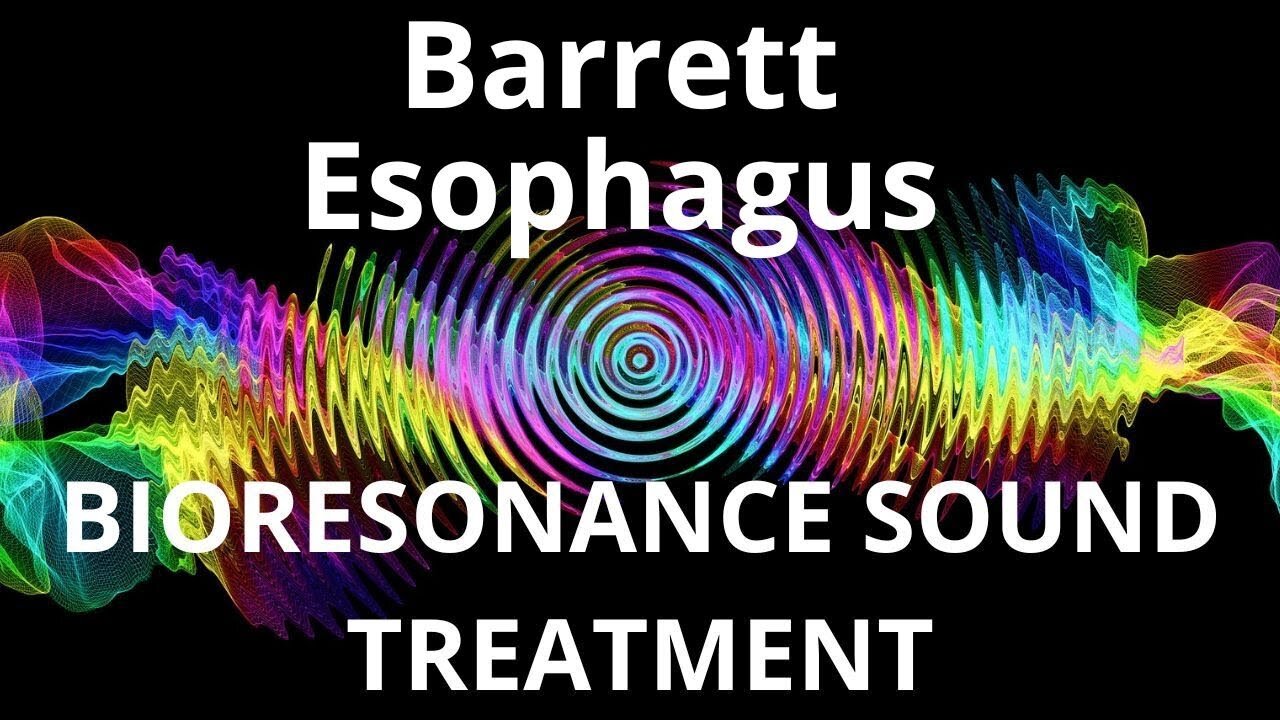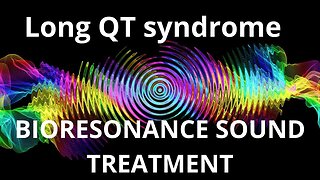Premium Only Content

Barrett Esophagus _ Sound therapy session _ Sounds of nature
#bioresonance#healing_energy#healing_frequencies
#Sounds_of_nature#sound_vibrations#sound_therapy
Barrett's esophagus is a condition characterized by the abnormal changes in the cells lining the lower esophagus. While traditional medicine provides effective treatments for Barrett's esophagus, exploring complementary therapies like resonant frequency sound therapy can offer additional benefits.
Barrett's esophagus is a condition that develops as a result of long-term gastroesophageal reflux disease (GERD). Chronic acid reflux causes the normal lining of the esophagus to be replaced by tissue that resembles the lining of the intestine. Traditional medicine primarily focuses on managing symptoms, reducing acid reflux, and monitoring for complications such as esophageal cancer. Incorporating complementary therapies can support the healing process and improve the patient's quality of life.
Resonant frequency sound therapy is a non-invasive complementary treatment that utilizes specific sound frequencies to stimulate the body's natural healing mechanisms. This therapy is based on the principle that every organ, tissue, and cell in the body has its own unique resonant frequency. By exposing the body to these frequencies, resonant frequency sound therapy aims to restore balance and promote healing at a cellular level.
Benefits of Resonant Frequency Sound Therapy for Barrett's Esophagus:
Reduced Inflammation:
Resonant frequency sound therapy has shown potential in reducing inflammation throughout the body. By targeting the esophageal tissues with specific sound frequencies, this therapy may help modulate the inflammatory response, reducing the inflammation associated with Barrett's esophagus. This can complement the effects of traditional anti-inflammatory treatments and potentially slow down the progression of the condition.
Improved Tissue Regeneration:
Barrett's esophagus is characterized by the abnormal growth of cells in the esophageal lining. Resonant frequency sound therapy has been found to support cellular regeneration and promote tissue healing. By stimulating the body's natural healing mechanisms at a cellular level, this therapy may aid in restoring normal tissue structure and function in the esophagus, potentially reversing the changes associated with Barrett's esophagus.
Stress Reduction:
Living with Barrett's esophagus can be emotionally and physically stressful. Resonant frequency sound therapy induces a deep state of relaxation, which can help reduce stress levels. By activating the parasympathetic nervous system, this therapy aids in calming the mind and body, promoting a sense of well-being and improving the patient's ability to manage stress and cope with the condition.
Enhanced Digestive Function:
Resonant frequency sound therapy has been shown to have positive effects on digestive function. By promoting the release of digestive enzymes and supporting optimal gastrointestinal motility, this therapy can aid in the proper breakdown and absorption of nutrients. This can contribute to overall digestive health and support the body's healing process.
It is important to note that resonant frequency sound therapy should not replace traditional medical treatments for Barrett's esophagus. Instead, it should be used as an adjunctive therapy in combination with conventional approaches.
Resonant frequency sound therapy offers potential benefits as an adjunctive treatment for Barrett's esophagus, providing additional support to the healing process
TO ACHIEVE A POSITIVE RESULT, DAILY LISTENING TO VIDEOS IS REQUIRED.
I wish you health and prosperity!
You can purchase unique medicines in my store:
https://store11998180.company.site/
You have the opportunity to support the channel:
https://destream.net/live/RadSiarAl/donate
-
 29:59
29:59
BIORESONANCE SOUND THERAPY
20 days agoLong QT syndrome _ Sound therapy session _ Sounds of nature
1061 -
 1:03:07
1:03:07
Candace Show Podcast
1 day agoI’M BACK! And STILL Asking Questions (Sorry Brigitte). | Candace Ep 233
111K213 -
 13:13
13:13
Mrgunsngear
19 hours ago $5.92 earnedStreamlight TLR-1 HP Review: Can It Dethrone Surefire?
38.2K10 -
 1:26:34
1:26:34
Man in America
21 hours agoExposing the Cover-Up That Could Collapse Big Medicine: Parasites
90K82 -
 1:12:09
1:12:09
Wendy Bell Radio
8 hours agoPet Talk With The Pet Doc
21.7K48 -
 27:15
27:15
Liberty Hangout
2 days agoThe Most DELUSIONAL Democrats on Earth!
41.6K153 -
 38:41
38:41
JohnXSantos
1 day ago $0.95 earnedHow To Start A CLOTHING BRAND on a BUDGET! Step X Step (2025)
18.5K2 -
 30:57
30:57
Her Patriot Voice
18 hours ago $16.82 earnedDemocrats More Unhinged Than EVER Before!
105K146 -
 29:13
29:13
Clownfish TV
1 day agoGen Z are Becoming the Boomers?! | Clownfish TV
28K41 -
 1:48:31
1:48:31
Squaring The Circle, A Randall Carlson Podcast
21 hours agoMEGA Tsunamis and the formation of our World ft. Dr. Dallas Abbot
41.2K9